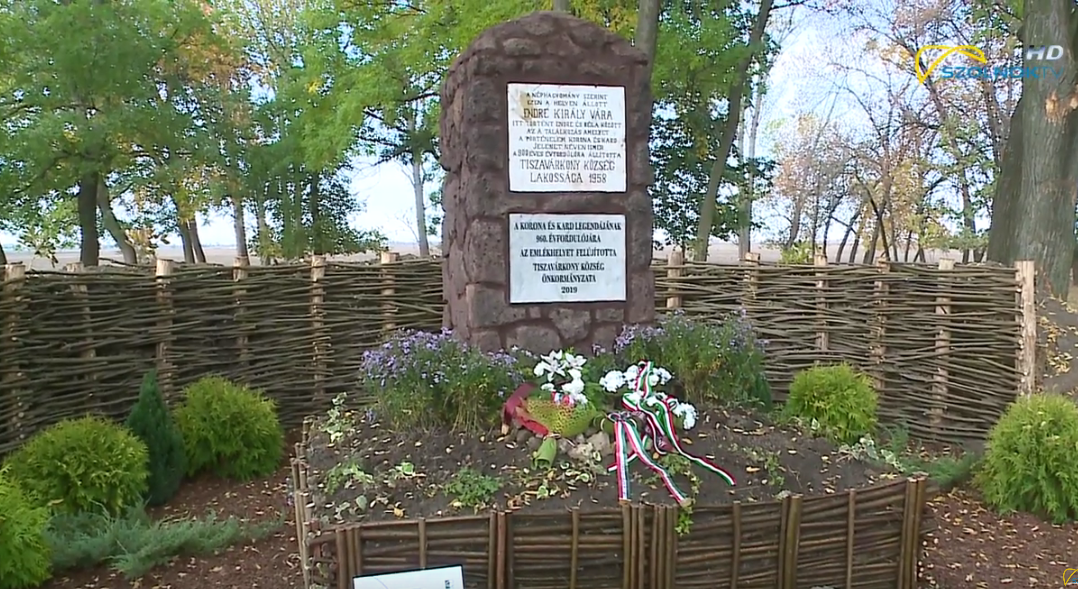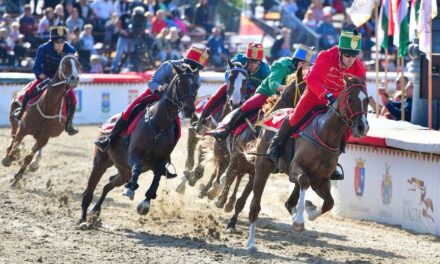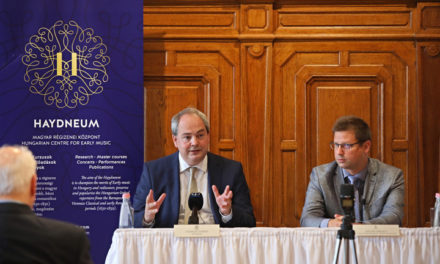"A nation that does not know its past does not understand its present, and cannot create its future!"
Europe needs Hungary ... which has never allowed itself to be defeated
The place of origin of the queens of Hungary, the most important stages of their lives between 997-1301
During the time of the princes, the Hungarian leaders chose wives exclusively from women from their own people. The first Árpád prince who took a wife from Bavaria was Vajk, i.e. István. According to the viewpoints and worldviews of historians and researchers, this gives different, and even often diametrically opposed, explanations during the research of the Árpád era. On the map, we can count twenty-two Eastern, Southern and Western European cities and principalities from which the Hungarian rulers chose their wives. But twenty-eight rulers are mentioned in the compilation. The difference is due to the fact that there were cities - such as Byzantium - from which several Hungarian kings brought spouses, and there were rulers who married more than once.

Prince Géza (972-997)
Wife Sarolt (around 950 – around 1008)
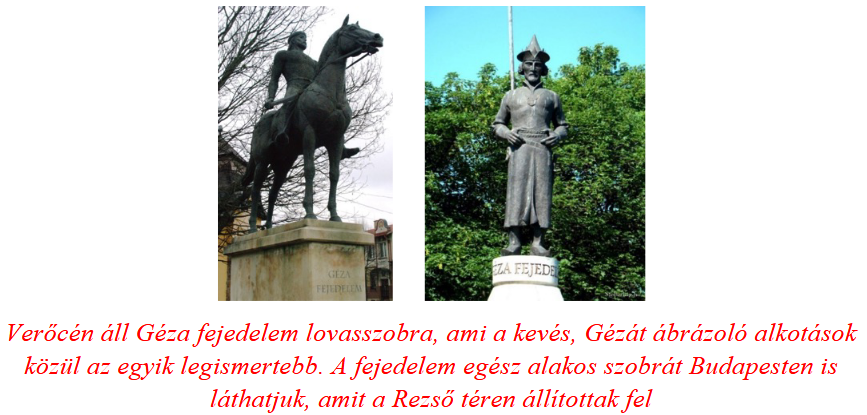
Prince Géza's wife was Sarolt from Transylvania. It is likely that she was Vajk's mother. It is likely because it emerged that Géza also had a spouse from a Polish princely family. Sarolt, born around 950, was the daughter of the Transylvanian leader Gyula. Following ancient customs, Géza married a Hungarian woman, but relations with Poles began already in his life.
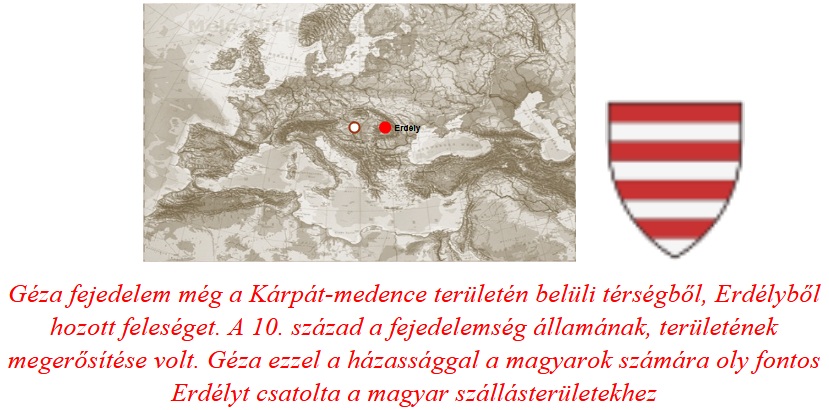
Around 970, Sarolt married Prince Géza.
Géza occupied the throne two years later, in 972, whose reign Sarolt helped both in his temperament and in his political mission, and was a worthy companion of her princely husband. Many interesting things have been recorded about him, including his manly behavior and his sometimes violent actions. After the death of Prince Géza Sarolt in 997, she continued to allow her son Vajk to ascend the throne. His name often appears in the years surrounding the clash between Koppány and Vajk. Géza Sarolt , he died sixteen years later, around 1008.
We know of his four children, among them the only son, Vajk, the later King Szent István. Among the girls, we know the names of Judit, Ilona and Sarolta.

Saint István (997-1038)
Wife Gizella of Bavaria (?-1065)
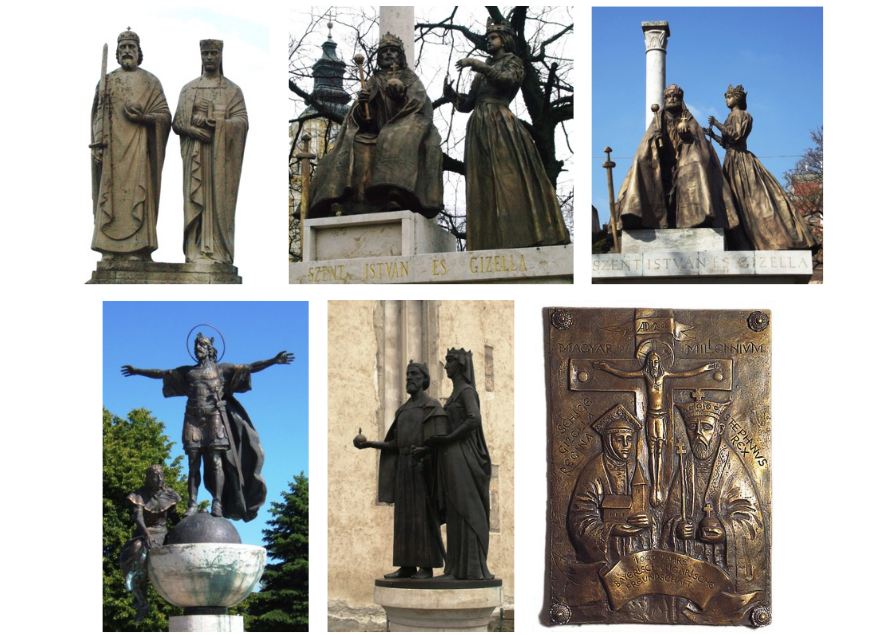
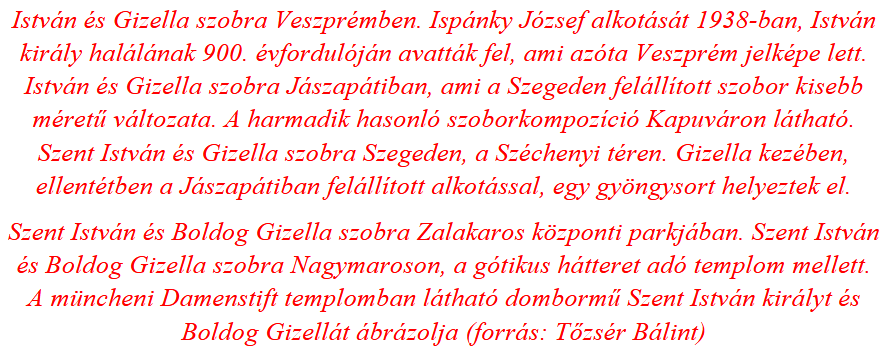
Gizella II from the Liudolf family. Daughter of Prince Henrik of Bavaria. Vajk and Gizella were married around 995/996. Mother Superior Gerberga, who oversaw Gizella's upbringing, opposed the marriage. Saying that Gizella could not marry a barbaric Hungarian, another husband was intended for her. However, István finally won over the strict Gerberga with his education and his plans to build a Christian country. Gizella became the wife of the first Hungarian king.
Gizella was a contemplative, religious soul. The marriage took place in Scheyern, Bavaria. The wedding took place in 996, and Saint Adalbert himself brought the young couple together.

Between 997-1000, Gizella played the role of princely lady, and then between 1000-1038, she played the role of queen. He lived in Hungary between 996-1042. After István's death, he was kept under house arrest in Veszprém, and he left the country only after 1042. She became the abbess of the Niedenburg monastery in Passau. He was also buried there after his death in 1065.

Gisella's brothers II. They were Henry, the later German-Roman Emperor, Bishop Bruno of Augsburg and Brigitta. Veszprém became the property of Gizella, which won the rightful and honorable title of "city of queens" in Hungarian history. The first cathedral in Veszprém built during his time, as well as the Greek nunnery in Veszprém Valley, played a pioneering role in the spread of Christianity in Hungary. This was the first women's convent in our country, the construction of which was connected with the opening of the pilgrimage route to Jerusalem around 1018. István was already thinking on a European scale when he made an alliance with the Emperor of Byzantium. Imre's son married a Byzantine princess, but the marriage produced no children. (It should be noted that the great schism did not take place in these years, it only happened in 1054.)
One of the pledges of the alliance with Byzantium was an even then valuable relic. The Hungarian ruler and Duke Imre received from the Byzantine ruler a chip from the cross of Christ, which arrived in our country in a reliquary enclosed in a double cross. The "apostolic double cross" can be a memory of this.
The Basilissa (Greek Orthodox) nuns came to our country accompanied by Prince Imre's wife from Byzantium, who helped Gizella in the production of the mass vestment (coronation robe), which is still intact today.
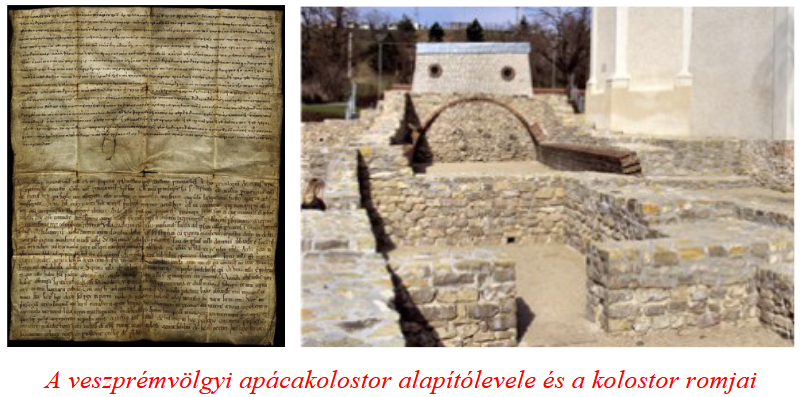
The foundation charter of Veszprémvölgy has survived to us in the 1109 transcription of King Kálmán Könyves - the only one we know. It already includes Hungarian words such as Duna, Kenese, Veszprém and king.
Blessed Gizella died on May 7, 1065 in the Passau monastery.
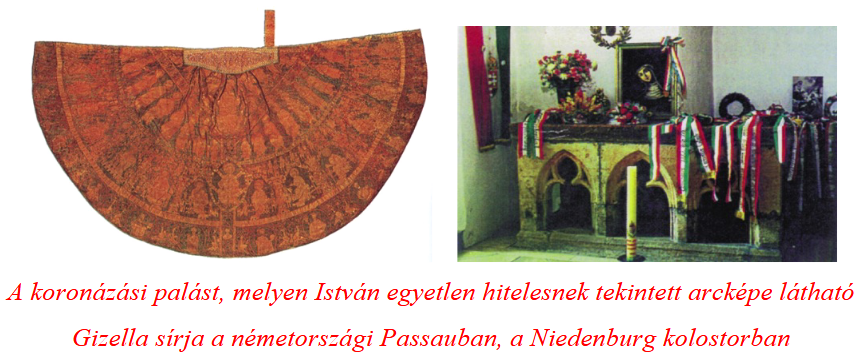
Gizella had two children from István. The first was Ottó, who left the living when he was a small child. The second child, Duke Imre, was prepared for the reign with great care and high hopes, who died unexpectedly in 1031, to the great grief of his parents and the Hungarian people.
Péter Orseolo (1038-1041)
He had no wife
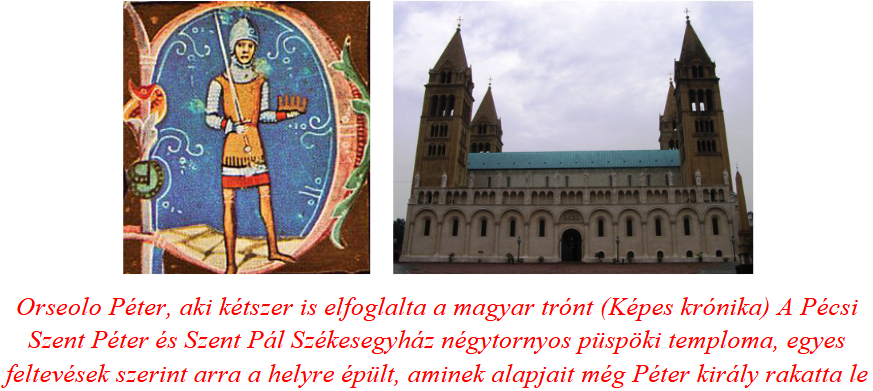
It is uncertain whether Peter had a wife at all, or if he did, he probably only married towards the end of the second period of his reign (1044-1046). In the first period of his reign (1038–1041), it can be assumed that he had no wife. He had no successor, so the dispute over the throne was renewed again.
Aba Sámuel (1041-1044)
His wife is unknown
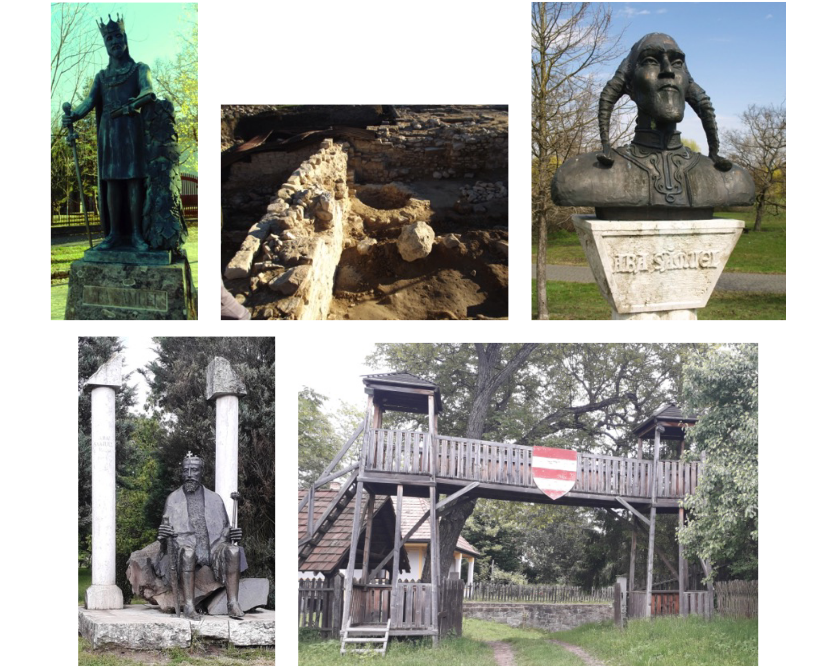
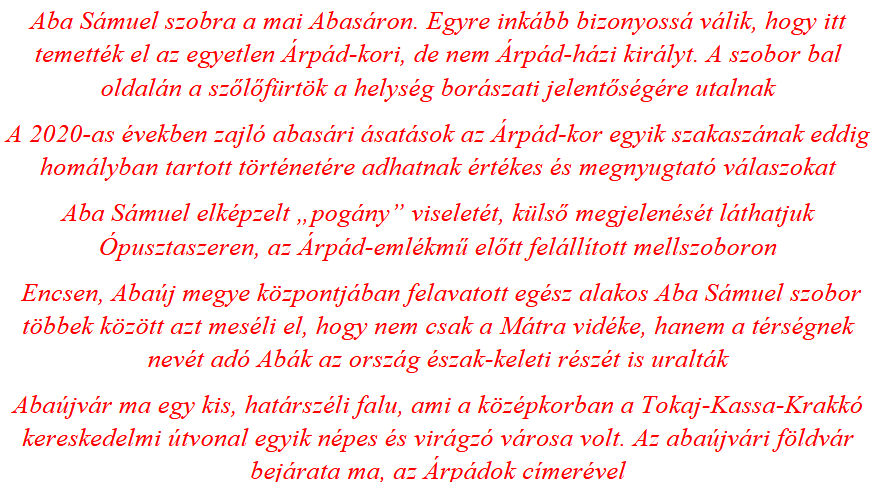
It is uncertain whether Aba Sámuel's wife or his mother was the daughter of Prince Géza, whose name is not mentioned in the sources.
Thus, we do not know for sure whether Aba was the brother-in-law or nephew of István I. Sámuel. He did have a wife, but she presumably died before he ascended the throne. He may have had several children from her. However, it is uncertain whether she was an "authentic" queen at all during her reign, between 1041 and 1044. (The archaeological excavations in Abasar, which are still taking place today, and DNA tests will hopefully provide an answer to the hitherto obscure origin of the Abás .)
Andrew I (1046-1060)
Wife Anastasia of Kiev (Rurik) (around 1023-1096)

In the year of King István's death, when Vazult was blinded in the castle of Nyitra to make him unfit to rule, his sons fled the country.
The fact that all this happened in 1038 is mind-boggling! Was the imprisoning and blinding of the Árpád prince in prison the work of István, or of foreigners claiming his throne? Prince András (who at that time was still called "pagan", which we do not know), was the eldest son of Vazul. When he left the country in 1038, he and his brothers fled to Bohemia, but from there all three soon left for Poland. After a while, András and Levente found refuge in Kiev, leaving Béla behind. In the same year, András married the daughter of Prince Yaroslav I, Princess Anastasia. Perhaps due to the marriage, perhaps the Kiev court, or both, but the prince converted to the Orthodox faith and took the name András. (András is a highly respected saint of Orthodoxy.)
Anastasia's father was Prince Yaroslav I (the Wise) of Kiev, the founder of the Rurik dynasty. Yaroslav was referred to as the "father-in-law of Europe" because he married off his daughters one after the other in the royal and princely courts of Europe.
Anastasia was born around 1023, married the Hungarian prince in 1038, with whom she moved to Hungary in 1046 - when András was called home. She was the Hungarian queen until 1060, when King András died.
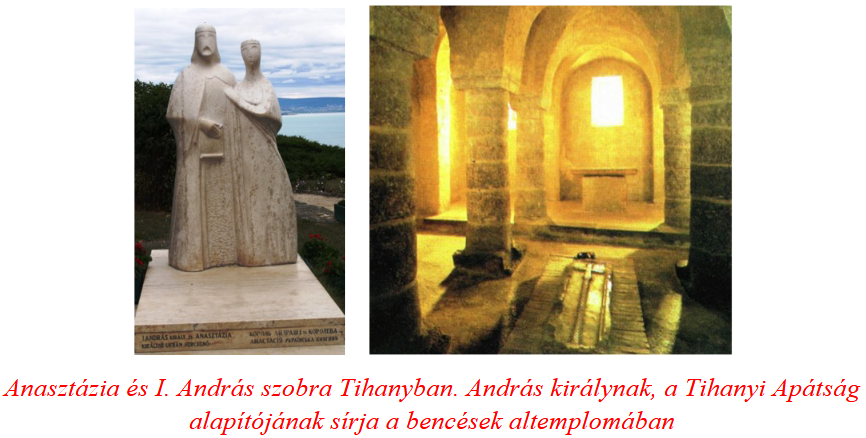
Anastasia fell in love with Tihany, where she built the monastery on a stone brought from Kievan Rus. In Bihar, he brought nuns from Kiev to the monastery of Tormova. (In the first centuries of the Árpád era, Bihar was an important religious and cultic center, which was fulfilled during the time of Saint László.)
The royal couple initially had no children, so András appointed his younger brother Béla as his successor to the throne. However, when Anastasia gave birth to Solomon, King András changed his decision. From this came the dispute over the throne, which then led to warfare between the brothers. (Anastasia's first-born child was Adelhaid, who was later married by the Czech prince.)
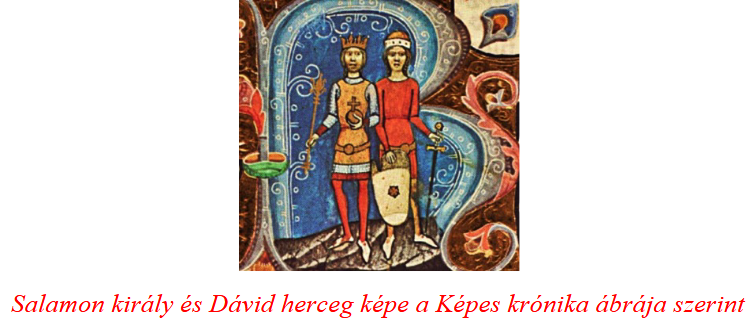
The coronation of Prince Solomon as a child, which is known from the story of The Crown and the Sword, caused a state of strife for the throne. We do not know anything about the other boy, David, who was also given a biblical name. However, his personality is also recorded in the Képes chronicle.
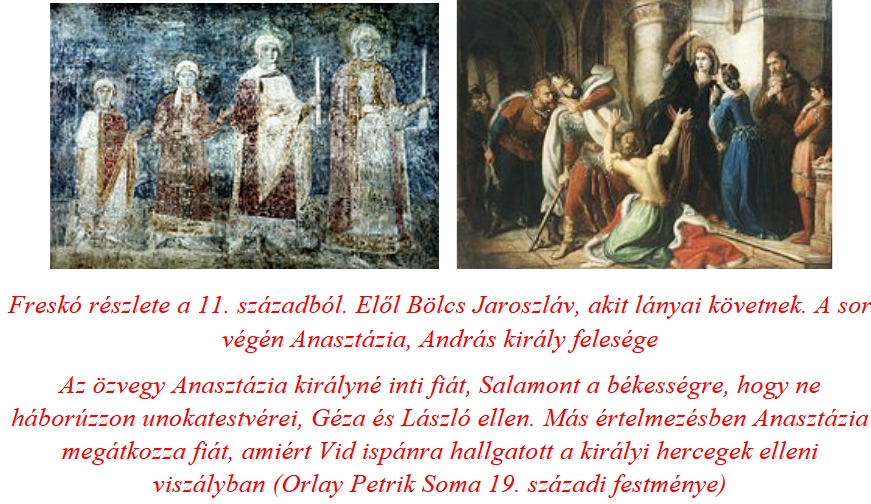
Anastasia, when Béla took the throne after the death of András in the fraternal war, fled to Bratislava with her son Salamon in 1060, and left the country that same year. He lived in the monastery of Admont in Styria until his death in 1096.
Béla I. Bajnok (1060-1063)
Wife Piast Richeza (1013-1075)
When András's younger brother - Vazul's second-born son - left the country in 1038, he found refuge in Poland. Here he married Princess Richeza from the House of Piast. Among the seven children she gave birth to, the Polish princess, also known as Rixa, was also the mother of Géza and Szent László.
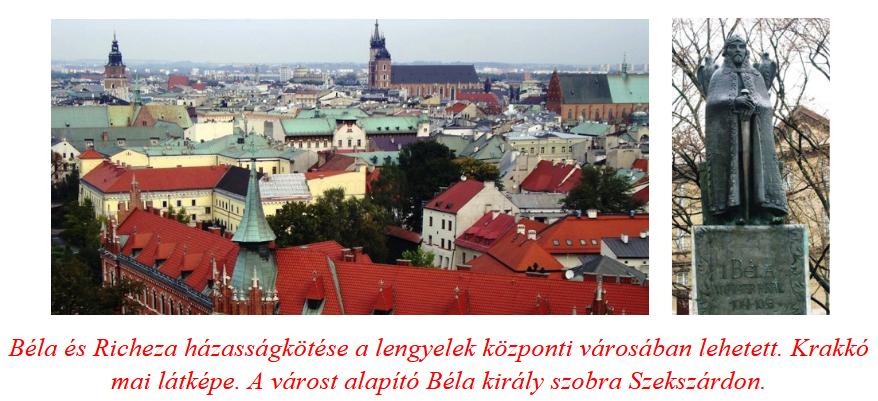
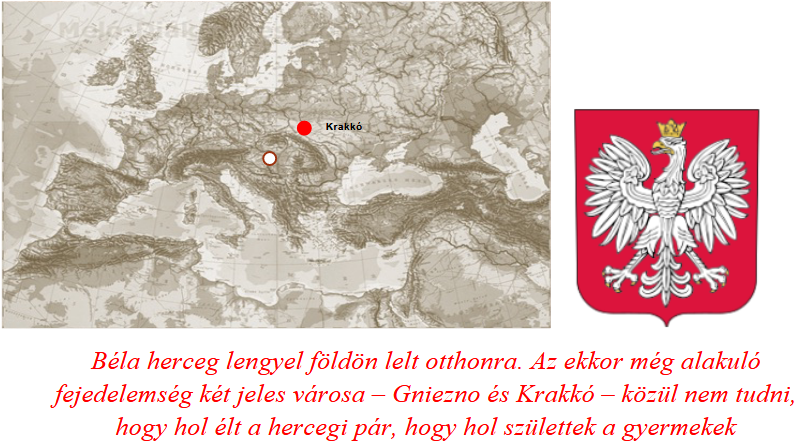
Béla Richeza's later wife was born in 1013.
His father II. (Piast) Mieszko, a Polish prince who took in the fleeing Hungarian princes. Richeza (Rixa) married Prince Béla in 1041. When András ascended the throne in 1046, Béla and his Polish wife returned to Hungary, as they felt that their exile was over. However, the brotherly struggle (the previously mentioned story of the Crown or Sword) resulted in the death of King András, and between 1060-1063 Béla came to the throne. Richeza was Queen of Hungary for three years. However, after 1063 (the legend links Béla's downfall to the Dömös assassination, when the throne fell on the king), he too had to flee when András's son, Salamon, came to the throne. Richeza died in May 1075, 12 years after her husband's death.
Salamon (1063-1074)
wife Judit Sváb (?-around 1095),
András and Anastasia's son, Salamon, took the throne. However, his rule created a state of strife for the throne from the very first minute, because Béla I's son, Géza, was also the rightful heir to the throne. The family of his wife, Judit Sváb, helped Salamon to gain power. In 1058 - when András was still on the throne - an agreement was reached IV. between Emperor Henry and András. At one point, they agreed that the then five-year-old Solomon and IV. Henrik's eleven-year-old sister, Judit, gets married as soon as possible. However, according to the customs of the time, the engagement was already held at that time. This was followed in 1059 by the already mentioned Tiszavárkony meeting (Crown or sword). In Várkony, Prince Béla was already playing with his life, but he was still saved. Prince Béla, as before, in 1038, again fled to Poland.
In 1060, he returned with Polish troops and overthrew the power of András, who lost his life in the fighting.
Anastasia and Solomon fled and stayed in Melk monastery for three years. However, in 1063, at the assembly in Mainz, the Germans decided to restore Solomon to the Hungarian throne at all costs. They did not give up their old plan to make Hungary a German vassal country. At first their will came true. During the escape from Dömös, Béla died of his injuries near Dévény, following his troops heading west . Solomon was now able to take the throne with German help.
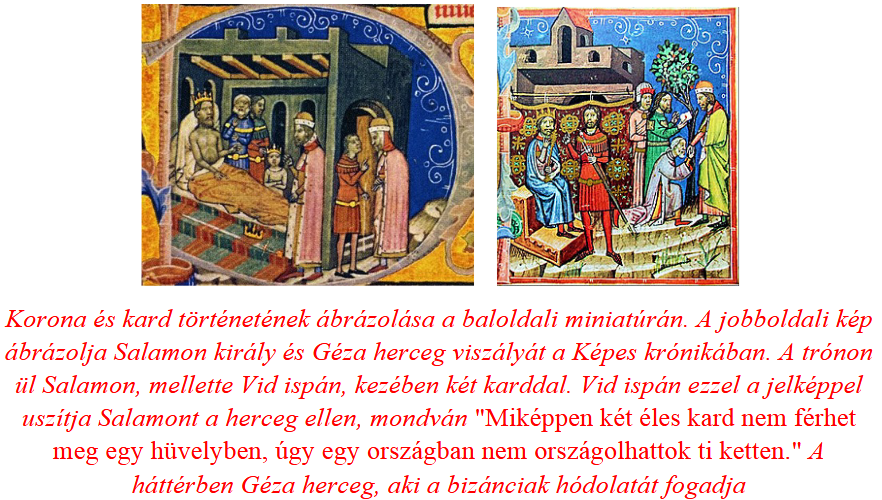
In the Thuróczy chronicle, we can read Anastázia's admonitions to her son Salamon: "Dear son! You no longer listen to my advice or your followers' advice. On the contrary, you listen to Vid more and more. What happened to you? You lose yourself and your people. Didn't I warn you that the Hungarian crown should be enough for you, live in peace with your brothers, give them their share of the kingdom. And now Vid can't even be a prince, and you can't keep your power either." Hearing these words, the hot-tempered Solomon almost hit his mother, and only his wife Judith prevented him from doing so. Anastasia failed to avert the conflict between Salamon and Béla Bajnok's sons - Géza and László.
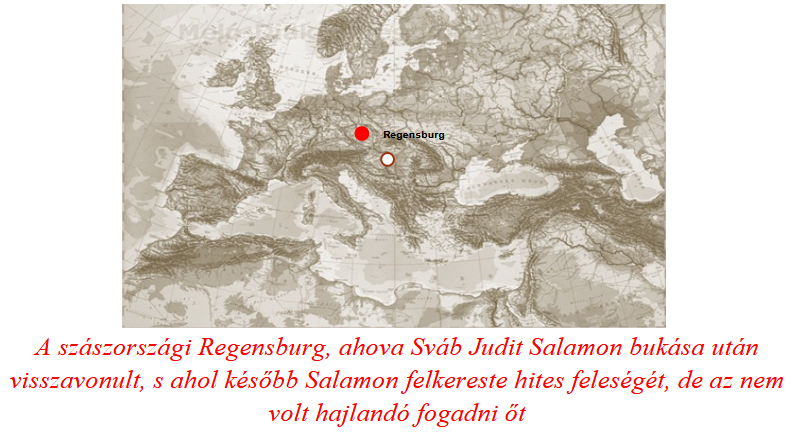
After the engagement in 1058, the wedding took place in 1063, when Solomon ascended the throne. Coming from the Principality of Saxony, Judit had a daughter named Zsófia from Salamon. The period of strife for the throne did not deepen the relationship between the spouses. When Solomon lost the throne in 1074, after the Battle of Mogyoród, Judit returned to Germany and left her husband.
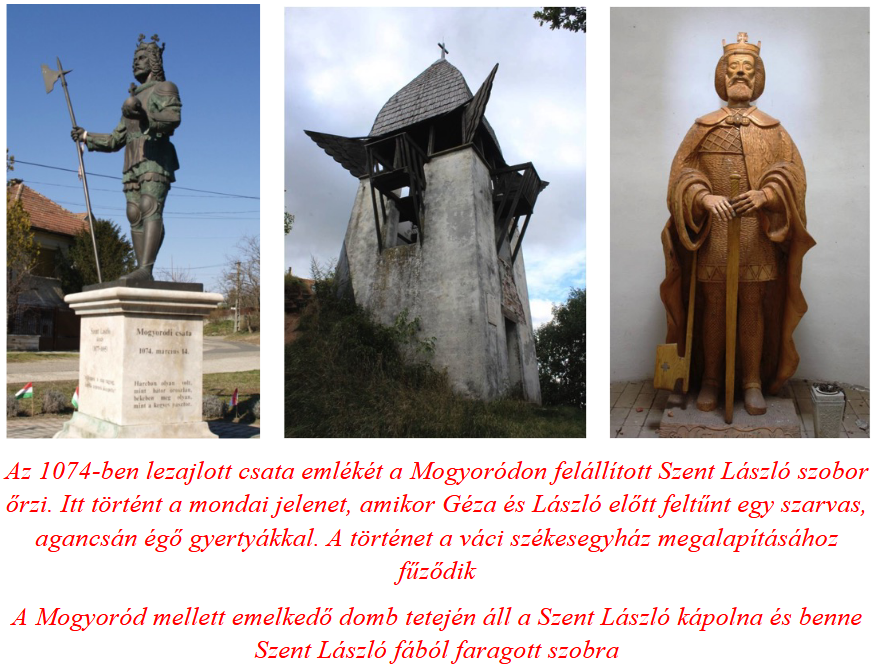
Ten years later, in 1084, Solomon visited his faithful wife in Regensburg, but she did not receive him or even accept him as her husband. The situation, which rarely occurs in royal families, took another turn in 1088, when Judit Sváb declared Solomon, who was still alive, to be dead and married the Polish prince Hermann Ulászló. She gave birth to a daughter for her new husband in 1088, 1089 and 1090. Judit died around 1095 in Goslar, Saxony. Where he was born.
Géza (1074-1077)
First wife Zsófia Loozi (?-1072)
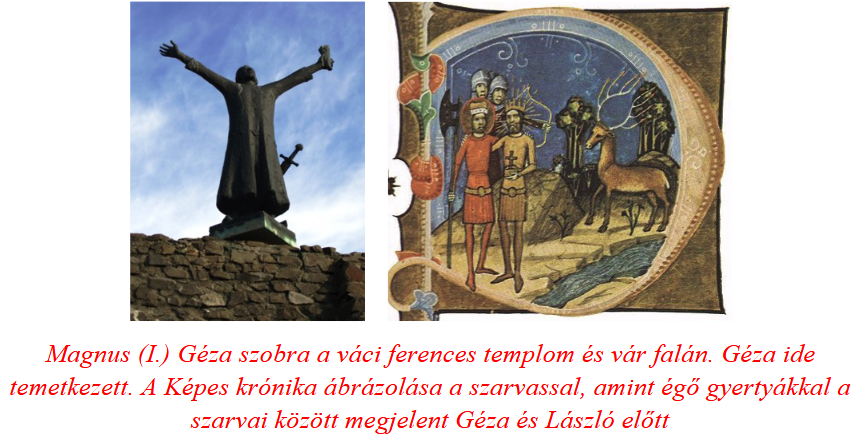
Prince Géza was in the imperial court as a hostage in the early 1060s. Here he met Zsófia of Dutch (French) origin, who was the daughter of Arnulf, Duke of Belgium-Limburg. Géza - this was an episode from his life - wanted to be sent as a hostage to the court of another country. However, there was a law that if the hostage was married, he could not be extradited to another country. Zsófia married Prince Géza around 1062, so the imperial court could not extradite her. During the ten years of their marriage, they had seven children, among them Kálmán (Könyves) and Prince Álmos. Zsófia died early, before Géza ascended the throne, in 1072.
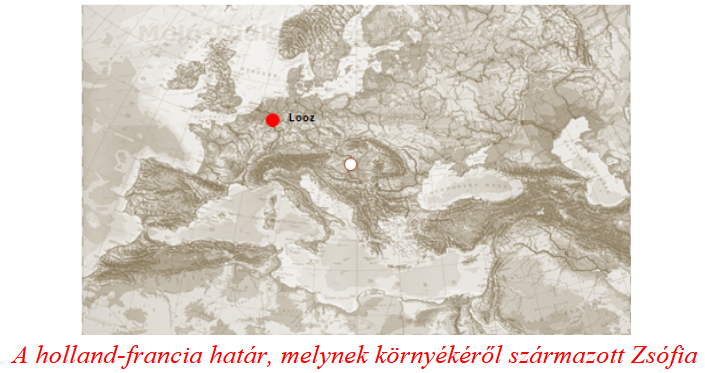
His second wife was Szünadéné (Sinodia)-(1058-1082), who was queen of Hungary between (1074-1077)
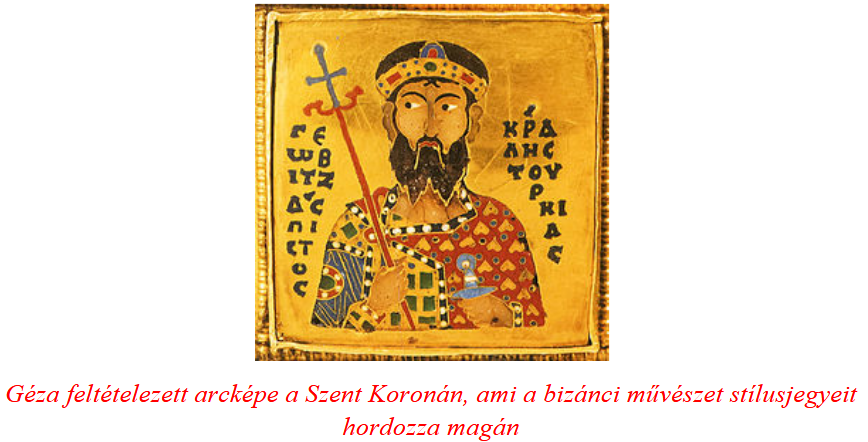
Born in 1058, the Byzantine princess came to Hungary in an unusual way. When Géza defeated the Byzantine troops rushing to the Hungarian border, he allowed the survivors to leave freely. VII. The Byzantine emperor Michael thanked him by offering Géza his sister's daughter in marriage. Géza accepted the "gift" and married Szünadene. They got married in 1072, and a daughter, Katalin, was born in Esztergom. After the death of Géza Szünadén, she went to Byzantium with her daughter, where she died in 1082.
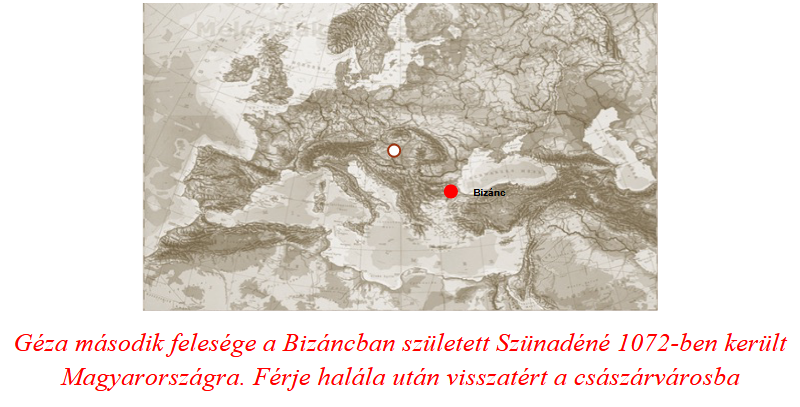
Saint László (1077-1095)
His first wife is unknown, she was presumably the daughter of a Hungarian nobleman
 Saint László's
Saint László's
second wife Adelhaid of Rheinfeld (1065-1090)
His second wife was Adelhaid, born in 1065, whose father was the German counter-king, Rudolf of Rheinfeld. Adelheid married the Hungarian king László I in 1078, who helped her father-in-law in the fight for the throne in Mölsen, IV. Against Emperor Henry. Rudolf fell in this battle in Mölsen. Between 1077 and 1090, Adelhaid was László's wife and Hungarian queen
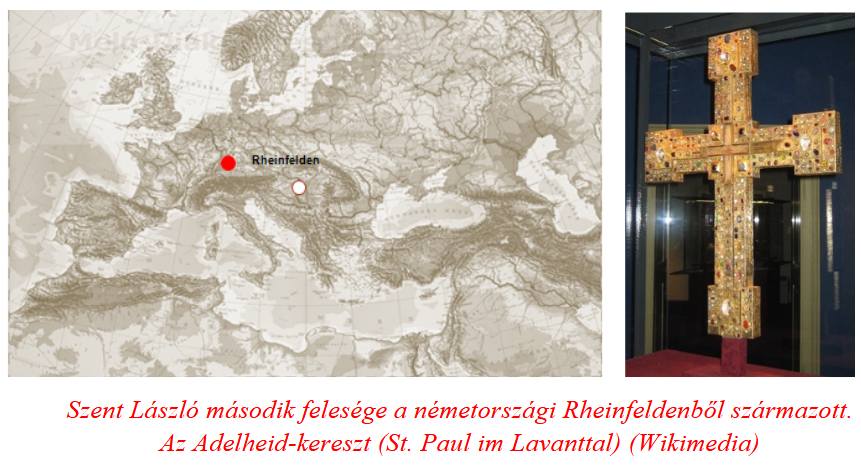
They had two daughters. Little Red Riding Hood Komnenos II. She became the wife of the Byzantine Emperor János, and took the name Eirene in Byzantium. He enjoyed great respect and love, and among other things, he was canonized as a saint.
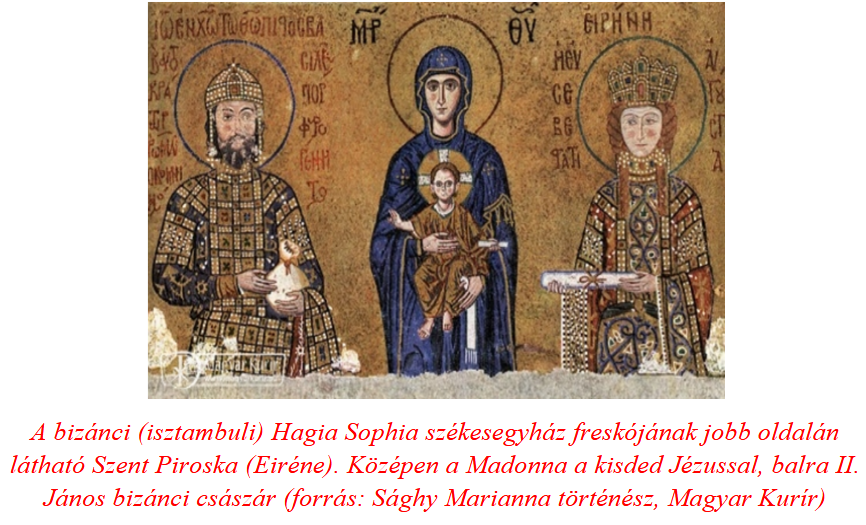
The name of the second daughter of the royal couple is unknown, but it is known that she became the wife of Prince Yaroslav of Russia.
(The Hagia Sophia church was recently declared a mosque by the Turkish head of state, so the mosaic depicting Saint Little Red Riding Hood can no longer be visited.) Adelheid, the wife of Saint László died in May 1090 and was buried in Veszprém. Evidence that his tombstone has survived.
Author: Ferenc Bánhegyi
(Cover image source: YouTube/Szolnok TV)
The parts published so far can be read here: 1., 2., 3., 4., 5., 6., 7., 8., 9., 10., 11., 12., 13., 14., 15., 16., 17., 18., 19.

